Hydrogen Sulfide Modulates Astrocytic Toxicity in Mouse Spinal Cord Cultures: Implications for Amyotrophic Lateral Sclerosis
- PMID: 39456494
- PMCID: PMC11504967
- DOI: 10.3390/antiox13101241
Hydrogen Sulfide Modulates Astrocytic Toxicity in Mouse Spinal Cord Cultures: Implications for Amyotrophic Lateral Sclerosis
Abstract
Hydrogen sulfide (H2S), a known inhibitor of the electron transport chain, is endogenously produced in the periphery as well as in the central nervous system, where is mainly generated by glial cells. It affects, as a cellular signaling molecule, many different biochemical processes. In the central nervous system, depending on its concentration, it can be protective or damaging to neurons. In the study, we have demonstrated, in a primary mouse spinal cord cultures, that it is particularly harmful to motor neurons, is produced by glial cells, and is stimulated by inflammation. However, its role on glial cells, especially astrocytes, is still under-investigated. The present study was designed to evaluate the impact of H2S on astrocytes and their phenotypic heterogeneity, together with the functionality and homeostasis of mitochondria in primary spinal cord cultures. We found that H2S modulates astrocytes' morphological changes and their phenotypic transformation, exerts toxic properties by decreasing ATP production and the mitochondrial respiration rate, disturbs mitochondrial depolarization, and alters the energetic metabolism. These results further support the hypothesis that H2S is a toxic mediator, mainly released by astrocytes, possibly acting as an autocrine factor toward astrocytes, and probably involved in the non-cell autonomous mechanisms leading to motor neuron death.
Keywords: astrocytes; hydrogen sulfide; mitochondria; motor neuron.
Conflict of interest statement
The authors declare no conflict of interest.
Figures
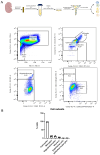
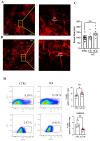

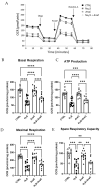
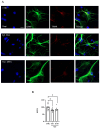
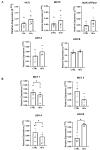

Similar articles
-
The Ying and Yang of Hydrogen Sulfide as a Paracrine/Autocrine Agent in Neurodegeneration: Focus on Amyotrophic Lateral Sclerosis.Cells. 2023 Jun 22;12(13):1691. doi: 10.3390/cells12131691. Cells. 2023. PMID: 37443723 Free PMC article. Review.
-
Hydrogen sulfide induces Ca2+ release from intracellular Ca2+ stores and stimulates lactate production in spinal cord astrocytes.Neurosci Res. 2021 Oct;171:67-73. doi: 10.1016/j.neures.2021.01.008. Epub 2021 Feb 6. Neurosci Res. 2021. PMID: 33561498
-
Disruption of the astrocytic TNFR1-GDNF axis accelerates motor neuron degeneration and disease progression in amyotrophic lateral sclerosis.Hum Mol Genet. 2016 Jul 15;25(14):3080-3095. doi: 10.1093/hmg/ddw161. Epub 2016 Jun 10. Hum Mol Genet. 2016. PMID: 27288458
-
Neuronal regulation of expression of hydrogen sulfide-producing enzyme cystathionine β-synthase in rat spinal cord astrocytes.Neurosci Res. 2015 Aug;97:52-9. doi: 10.1016/j.neures.2015.03.003. Epub 2015 Mar 20. Neurosci Res. 2015. PMID: 25797494
-
Role of hydrogen sulfide in secondary neuronal injury.Neurochem Int. 2014 Jan;64:37-47. doi: 10.1016/j.neuint.2013.11.002. Epub 2013 Nov 14. Neurochem Int. 2014. PMID: 24239876 Review.
References
-
- Bełtowski J. Vascular Effects of Hydrogen Sulfide. Humana; New York, NY, USA: 2019. Synthesis, Metabolism, and Signaling Mechanisms of Hydrogen Sulfide: An Overview; pp. 1–8. - PubMed
LinkOut - more resources
Full Text Sources

